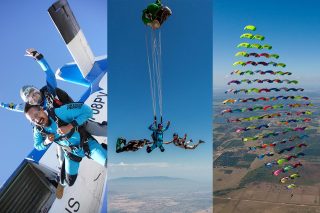Skydiving Vs. BASE Jumping
Skydiving
Posted by: Skydive Perris
10 months ago
B.A.S.E. Compared to Skydiving (Differences Explained)
If you’re someone who’s interested in air sports, you might wonder about the difference between skydiving and BASE jumping. Both are aerial activities, both require the use of a parachute, both involve a jump, and adrenaline is the driving force behind both activities. So what’s so different about them?
Skydiving and BASE jumping are, in fact, completely different sports despite sharing a handful of similarities. They require unique training and equipment and the environments in which they take place are completely different. Even their risk levels are quite varied – is BASE jumping more dangerous than skydiving? If you’re looking at the stats, yes it is.
Come along on an adventure and let’s answer the question: Skydiving vs BASE Jumping, what’s the difference?
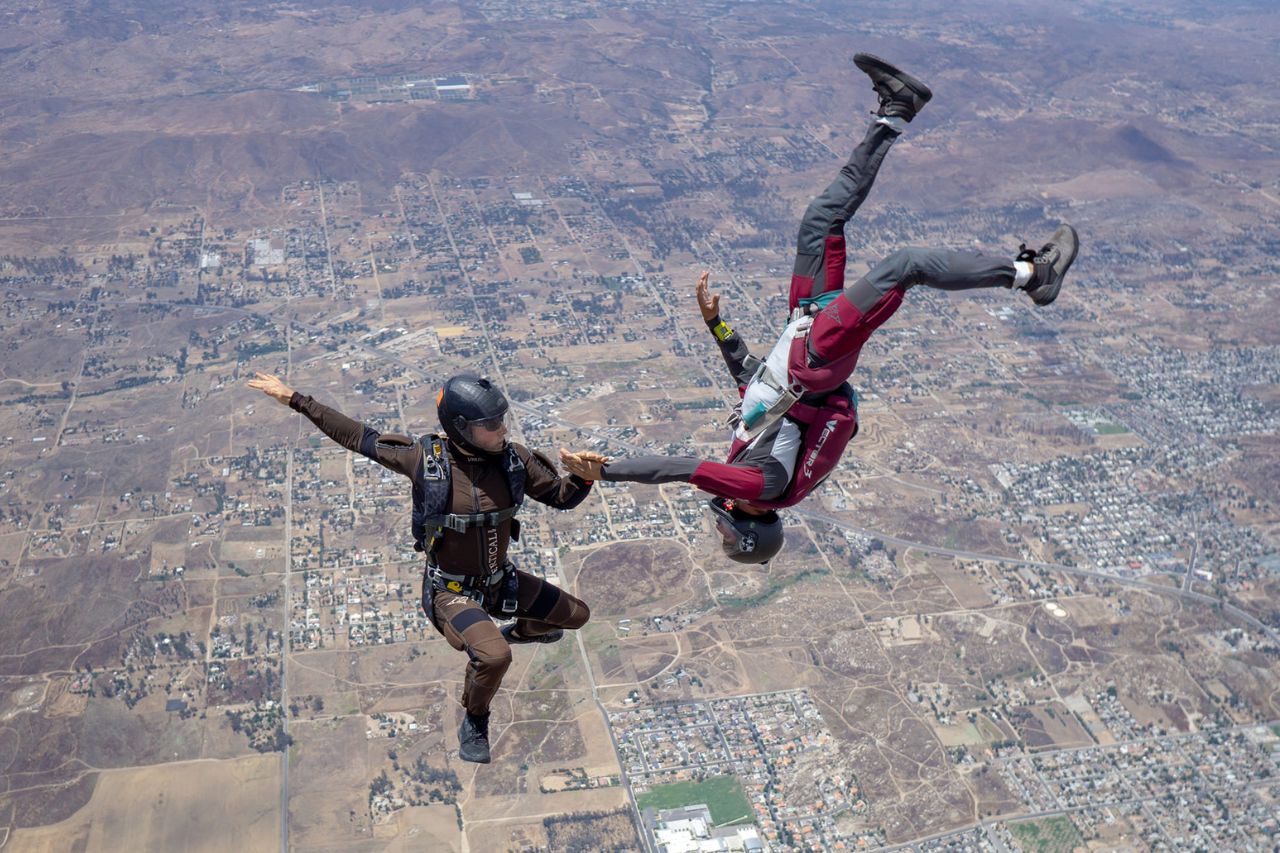
What Constitutes as a Skydive?
A skydive is defined as the act of jumping from an airplane and (typically) executing a prolonged freefall before deploying a parachute. Basically exactly what you imagine when you think of skydiving: people falling through the sky, holding hands and creating shapes before deploying their parachutes and floating to the ground.
But skydiving is so much more than what it looks like on commercials and inspirational office posters. The sport of skydiving is made up of countless disciplines, passions, destinations, and even jobs. Skydivers can choose to specialize in freeflying, wingsuiting, canopy flight, instructing, or a mix of everything! Some skydivers travel the world jumping in mind-blowing places with unbelievable views. Others become professional athletes who compete against the best skydivers in the world.
All of these things qualify as skydiving. And the cultural aspect of skydiving is arguably even more important than the act of jumping itself. When you become a skydiver, you become part of a family. People who you learn and grow with, have fun with, and even take risks with. It’s a bond that can’t be broken and yields memories that last a lifetime.
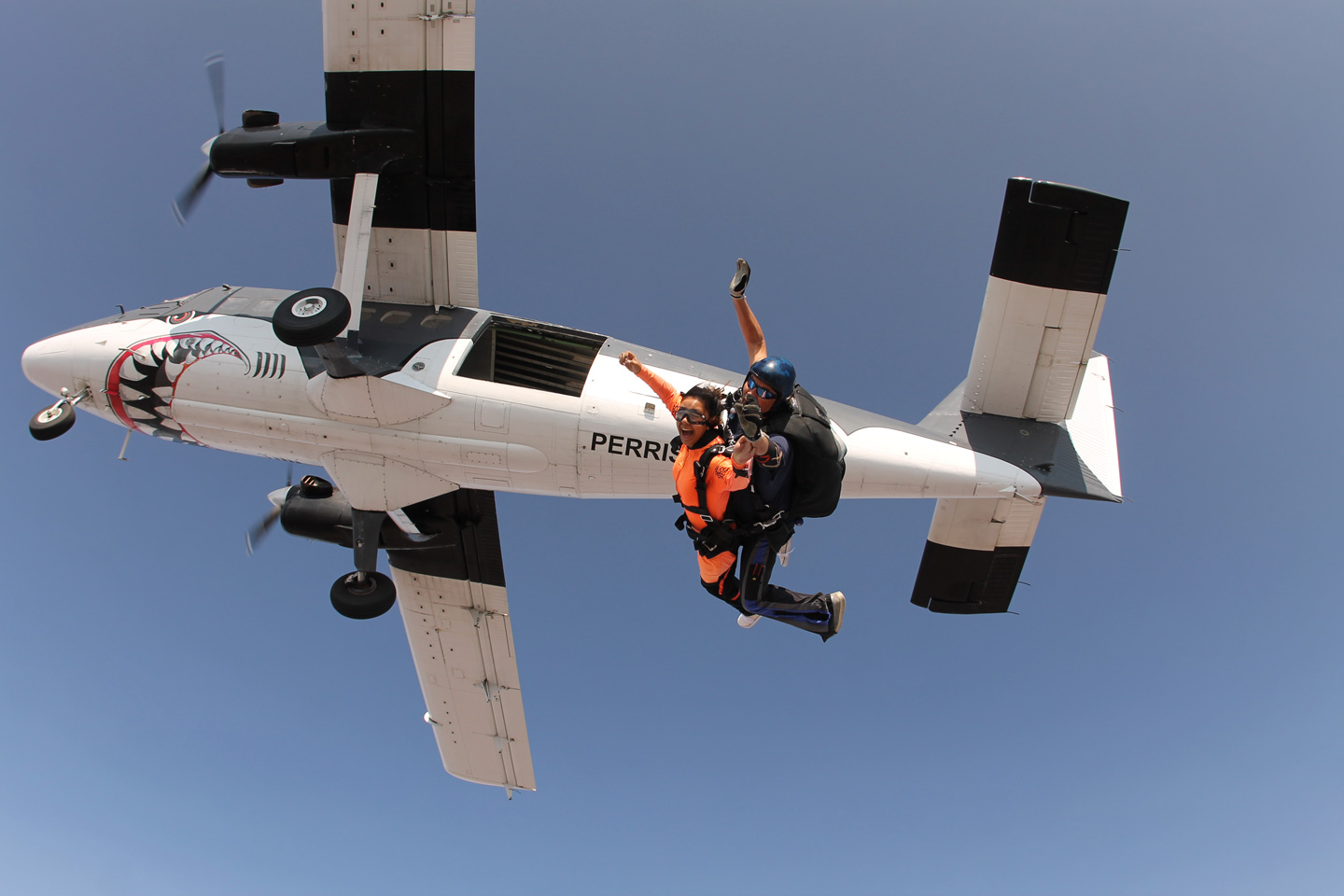
What is a BASE Jump?
A BASE jump is defined as a parachute jump from a fixed point rather than an aircraft. The similarities between the definition of a skydive and a BASE jump (see: jump, parachute) are significant … but the difference between jumping from an airplane vs from a fixed object is huge.
It’s the fixed object aspect that gives BASE jumping its name. The letters in the acronym “BASE” actually represent the different fixed objects one can jump from:
B: Building
A: Antenna
S: Span (i.e. a bridge)
E: Earth (i.e. a cliff)
In fact, BASE jumpers actually earn a BASE number once they’ve executed a jump from an object in each letter.
The variety contained in the sport of BASE jumping goes far beyond the objects available to jump from. BASE jumpers might take part in multiple-person jumps, BASE wingsuiting, proximity flying, speed flying, and more. BASE jumping is a sport unto itself, not just an extension of skydiving.
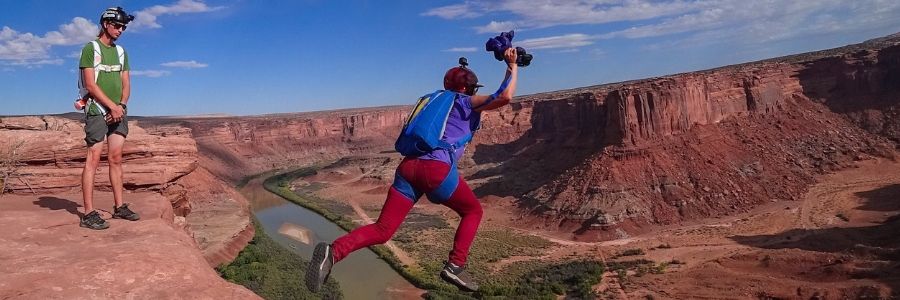
Which is Safer: Skydiving or BASE Jumping?
Statistically speaking, skydiving is much safer than BASE jumping. There’s just a much smaller margin for error in BASE jumping than in skydiving. According to the National Institutes for Health, a government agency, you’re five to eight times more likely to die BASE jumping than skydiving. And the statistics for injuries are even more staggering. Why? The most significant reasons are altitude, equipment, and environment.
Altitude
Skydiving typically involves jumping from a higher altitude than BASE jumping. At Skydive Perris, we typically jump from 12,500 feet above the ground (with the option of making a high-altitude jump) and deploy our parachutes between 3,000 and 5,000 feet. BASE jumpers, on the other hand, typically jump from a fixed object 300 to 2,000 feet above the ground! There is far less time to address any potential issues that arise during a BASE jump – it all happens very quickly.
Equipment
BASE jumping rigs only have one parachute, compared to the two that are in a skydiving rig. If something goes wrong with the one, the only chance a BASE jumper has for a safe landing is to hope the issue is fixable in the very limited time before meeting the ground.
Additionally, most skydiving rigs (and all tandem skydiving rigs) are equipped with a computer, called an Automatic Activation Device (AAD). An AAD automatically deploys the reserve parachute if the skydiver doesn’t do it manually for any reason. There’s nothing like that on a BASE rig – you’re on your own.
Environment
The environment in which BASE jumps take place is also more extreme. Skydives are highly regulated and occur in a relatively consistent manner. Airplanes are meticulously maintained, landing areas are soft and clear, and every part of the jump is made to be as predictable as possible.
In contrast, BASE jumps are often executed in harsh environments, whether it’s climbing to the top of a cliff in the desert or sneaking onto the roof of a city building. And BASE jump landing areas reflect this. Rivers, boulders, and even moving cars present serious hazards in many BASE jump landings.
Is Skydiving or BASE Jumping Scarier?
Discussing how scary something is is always complicated because ‘scare factor’ is such an objective measurement. Every person reacts to different situations according to their own disposition, experience level, and history.
Unless fear of flying in an airplane is a determining factor, most people would likely agree that BASE jumping is scarier than skydiving. The risks are greater, the statistics look more dire, and the margin for error is smaller. The fact is that with BASE jumping, there is more on the line, fewer contingency plans, and a lot more pressure.
But the only way to know for sure is to try it for yourself. We can’t help you in the BASE jumping department, but we can give you plenty of time in flight! At Skydive Perris, you can jump tandem, learn how to skydive solo, and – if airplanes are a no-go – fly in our wind tunnel.
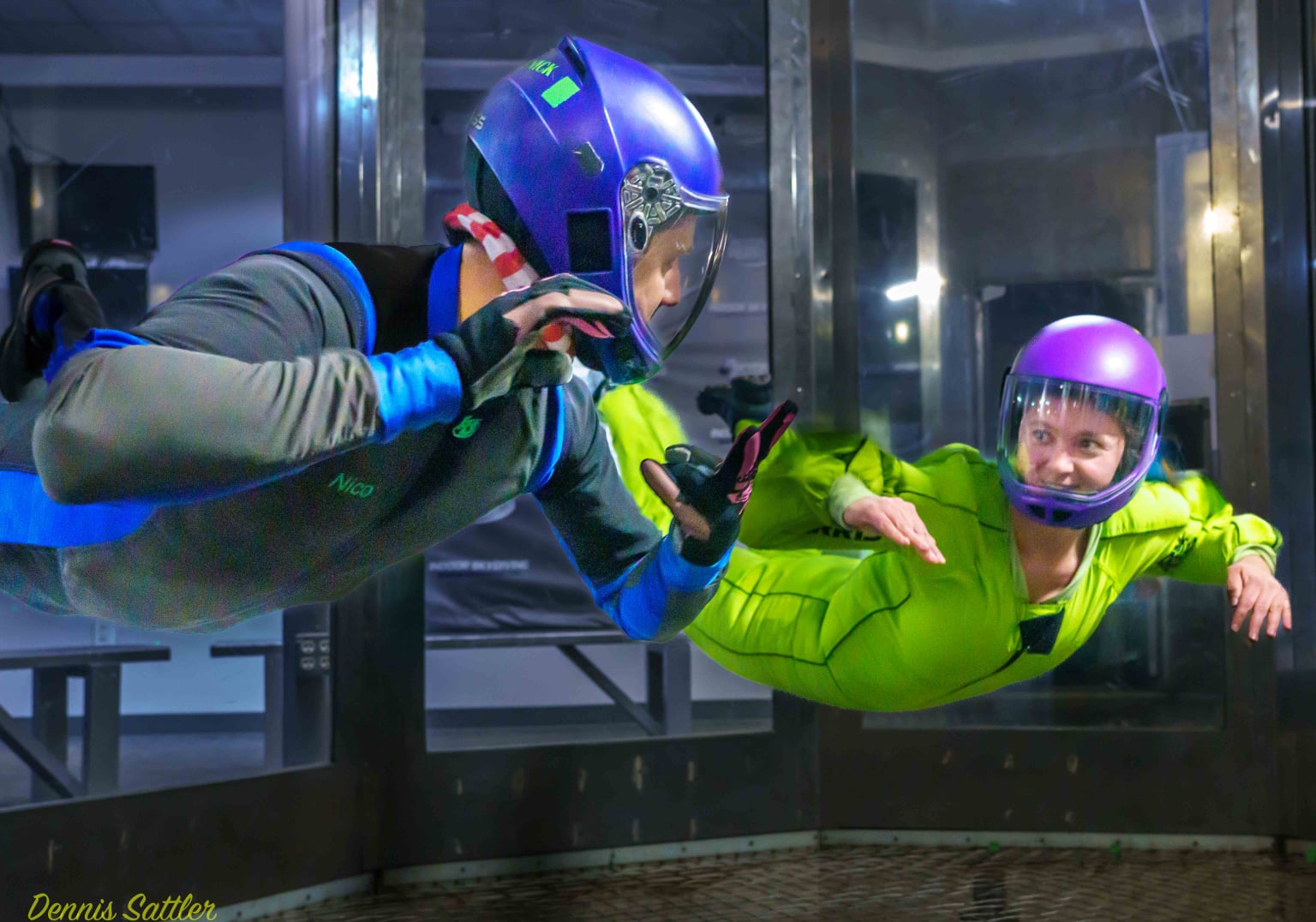
Do You Need to Skydive Before You BASE Jump?
While there is no hard and fast rule about how you get into BASE jumping (there isn’t a regulatory organization that oversees BASE jumping the same way there is for skydiving), it’s highly recommended that you make 200 skydives before even thinking about learning how to BASE jump.
This prerequisite serves multiple purposes. First, it helps you build the skills necessary for BASE jumping in a more controlled environment. Learning how to fly your body, your parachute, and land safely are all things you’ll learn in just the student portion of skydiving training. And the subsequent 175 skydives will only serve to perfect those skills.
Skydiving before BASE jumping also helps you understand why you want to BASE jump and if it’s something you really need to do. BASE jumping is a huge commitment and a life-altering decision. You’re putting yourself at increased risk, and you’re entering a culture that will change the way you live your life. Skydiving first will help you realize if skydiving is actually enough for you or if you do really want to push the boundary further.
And finally, when becoming a skydiver, you will join a community of jumpers who look after their sky family. If it turns out BASE jumping IS your thing, you will meet other BASE jumpers on the dropzone, learn from their experience, and follow the right path to become an ‘as-safe-as-can-be’ BASE jumper.
Whether you’re someone who wants to skydive or BASE jump, first get a taste of human flight! Start your journey with us! Blue skies!
Related Article: How Dangerous is Tandem Skydiving
Categories:
You May Be Interested In:

Unique California Experience Gifts for the Holidays
1 month ago by Skydive Perris

Skydiving Patches You Can Collect at Skydive Perris
3 months ago by Skydive Perris

Famous People Who’ve Jumped at Skydive Perris
3 months ago by Skydive Perris

The Ultimate Family Hidden Gem in SoCal
6 months ago by Skydive Perris
